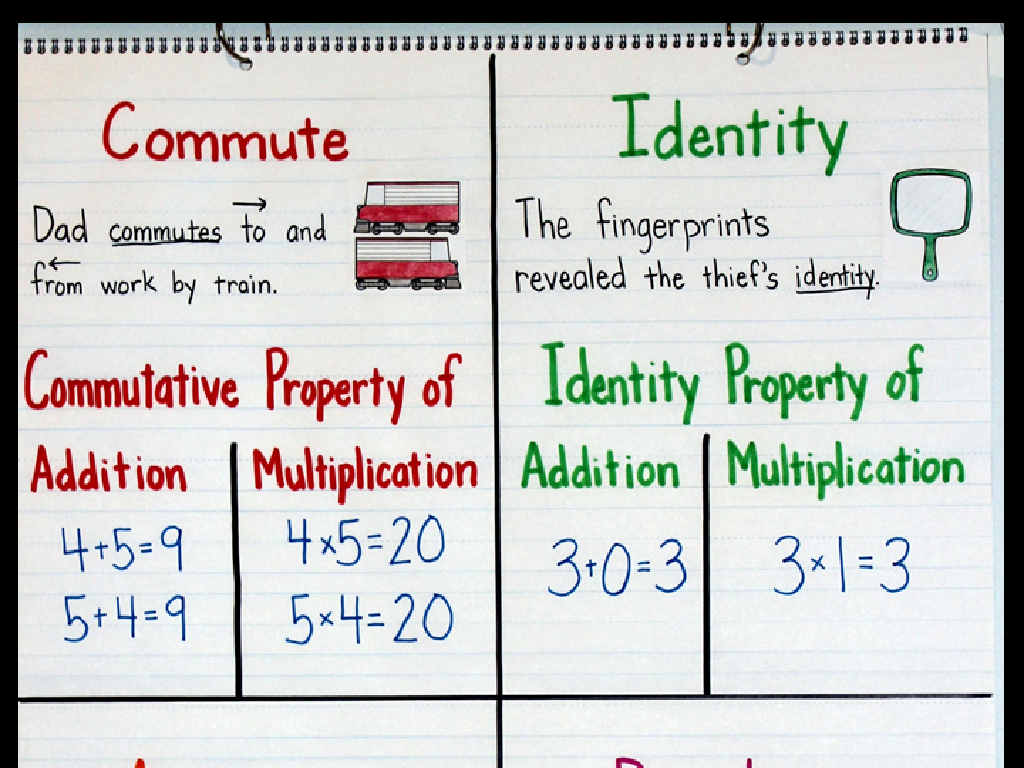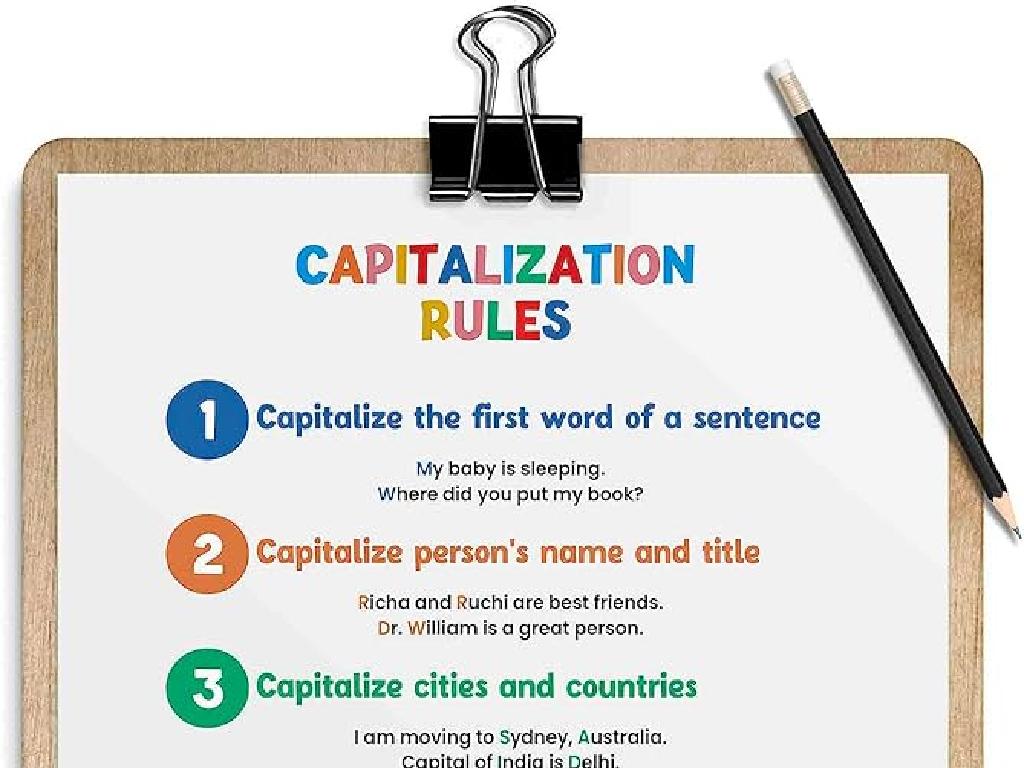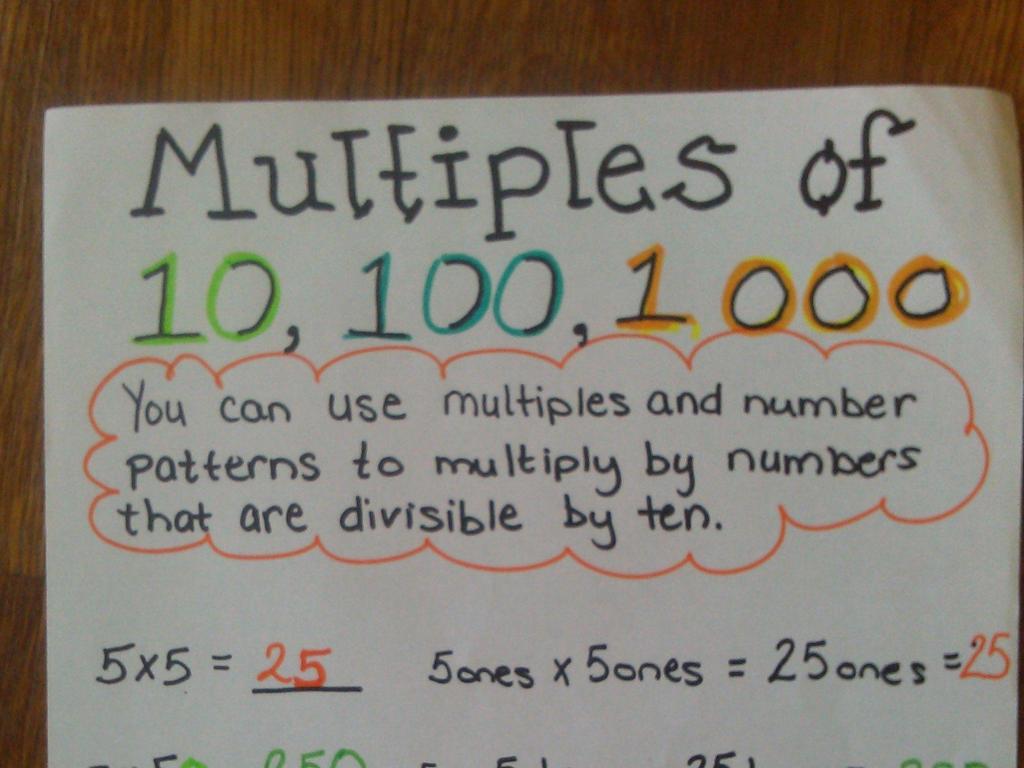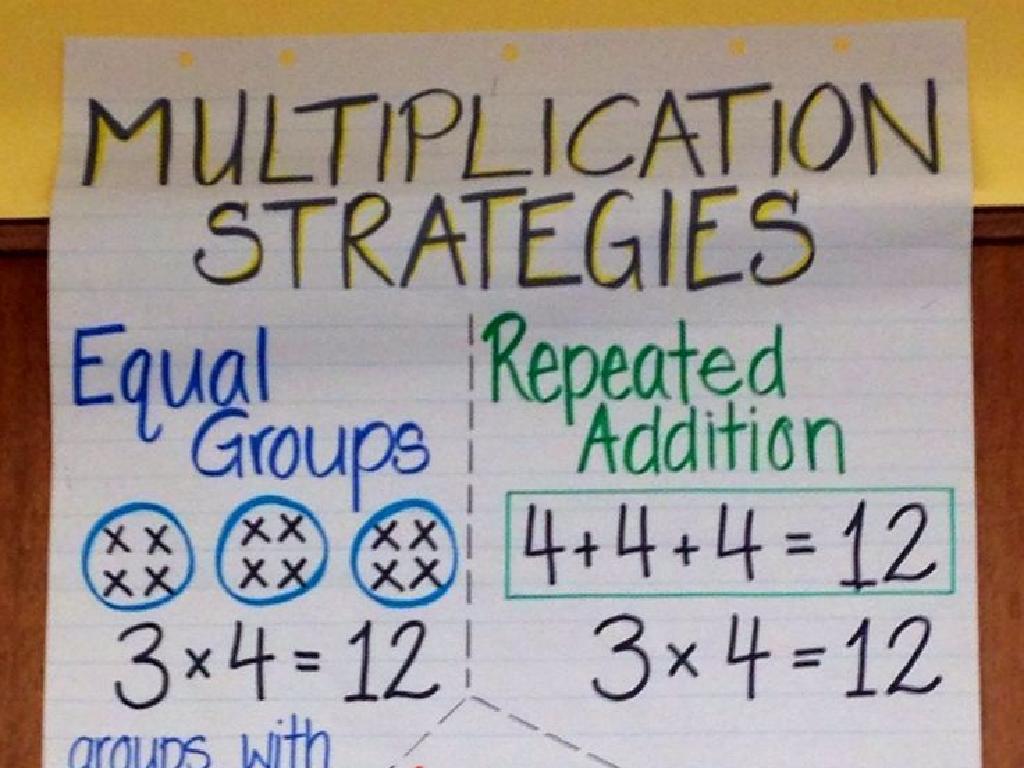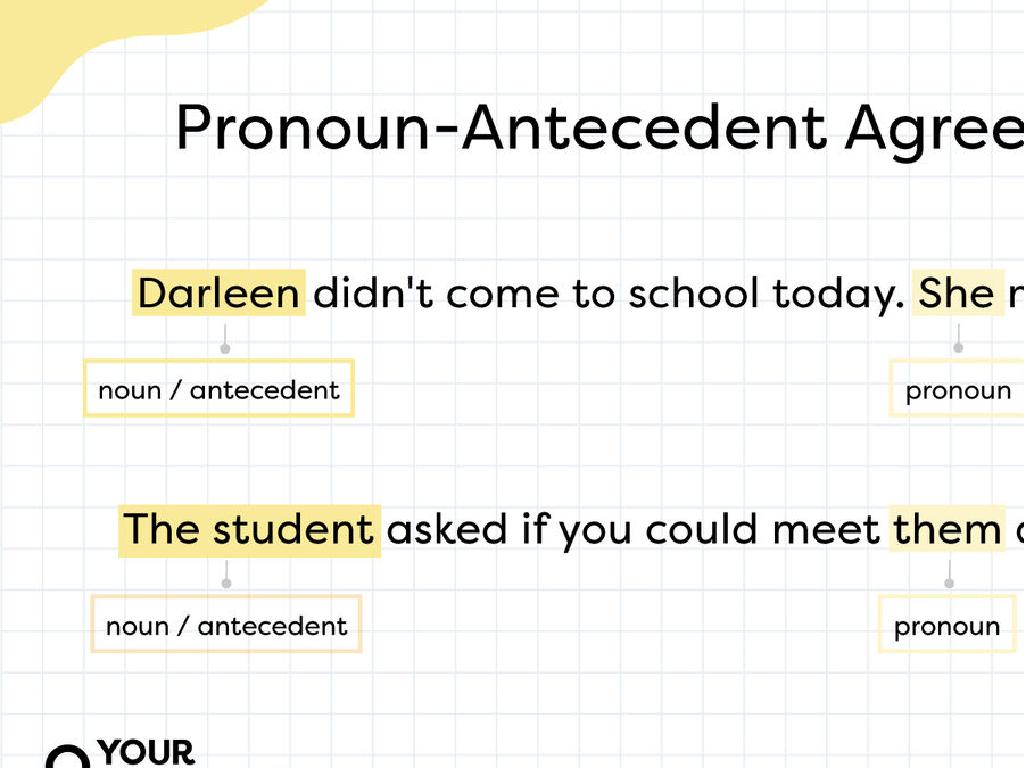Convert Between Customary And Metric Systems
Subject: Math
Grade: Eighth grade
Topic: Units Of Measurement
Please LOG IN to download the presentation. Access is available to registered users only.
View More Content
Converting Between Measurement Systems
– Explore measurement systems
– Learn about customary and metric units
– Importance of conversion skills
– Used in travel, recipes, and science
– Converting: customary to metric
– Use conversion factors to change units
– Converting: metric to customary
– Practice with real-world examples
|
This slide introduces the concept of different measurement systems and the necessity of converting between them. Understanding both customary and metric systems is crucial in a global environment where both systems are in use. For instance, while the U.S. primarily uses customary units, most of the world uses metric units. Conversions are essential in various real-world applications such as cooking, traveling, and scientific research. Today’s lesson will focus on teaching students how to convert units from the customary system (inches, feet, yards, miles, ounces, pounds, etc.) to the metric system (millimeters, centimeters, meters, kilometers, grams, kilograms, etc.) and vice versa. Provide students with conversion charts and guide them through several examples to ensure they grasp the concept. Encourage them to ask questions and work through practice problems for better understanding.
Understanding the Customary System
– Define the Customary System
– A system of measurement used in the U.S.
– Units of length, weight, volume
– Inches, feet, yards, miles, ounces, pounds, gallons, and more
– Everyday examples of customary units
– Measuring height (feet), groceries (pounds, ounces), road distances (miles)
– Conversion to metric system
– Learn how to convert units like inches to centimeters, pounds to kilograms
|
This slide introduces the Customary System of measurement, which is primarily used in the United States. Start by defining the system and discussing its origin. Highlight the common units of length (inches, feet, yards, miles), weight (ounces, pounds), and volume (cups, pints, quarts, gallons), and provide everyday examples to help students relate to the units. For instance, discuss how height is measured in feet and inches, groceries in pounds and ounces, and road distances in miles. Conclude by explaining the importance of being able to convert these units into the metric system, as this skill is essential for understanding international standards and scientific measurements. Provide a few examples of conversions, such as 1 inch equals 2.54 centimeters and 1 pound equals 0.453592 kilograms, to demonstrate the process.
Understanding the Metric System
– Define the Metric System
A global decimal system of measurement based on multiples of ten.
– Explore meters, liters, grams
Meters measure length, liters volume, and grams mass.
– Metric system’s base-10 simplicity
All units increase or decrease in powers of 10, making calculations easier.
– Converting within the metric system
Use conversion factors to switch between units, like centimeters to meters.
|
The Metric System is an international standard for measuring various physical properties. It’s based on the number 10, which simplifies calculations and conversions. Introduce the basic units of the metric system: meters for length, liters for volume, and grams for mass. Emphasize the ease of converting between units within the metric system due to its base-10 structure. For example, 1000 millimeters equals 1 meter, and 1000 grams equals 1 kilogram. Provide students with conversion charts and practice problems to solidify their understanding. Discuss the importance of the metric system in science and international trade.
The Importance of Unit Conversion
– Globalization impacts
International trade requires converting units for consistency.
– Metric in science & tech
Most scientific fields use the metric system for standardization.
– Real-world conversion examples
Cooking recipes, traveling, and medicine dosage often need conversions.
– Mastering unit conversion
|
Understanding how to convert between customary and metric systems is crucial in a globally connected world. Students must recognize that different countries and industries use different measurement systems. For instance, while the U.S. primarily uses the customary system, international trade necessitates a common ground, often found in the metric system. Science and technology fields also predominantly use the metric system for its universality and ease of calculation. Real-world applications of conversion are abundant, from adjusting recipes in cooking to calculating the correct dosage of medicine or understanding distances while traveling. Mastery of unit conversion is an essential skill for students, preparing them for real-life situations where they need to apply their mathematical knowledge.
Conversion Basics: Customary and Metric Systems
– Learn conversion factors
– A conversion factor is a number used to change one set of units to another, by multiplying or dividing.
– Using a conversion chart
– A chart helps to quickly find the conversion factor between units of measurement.
– Practice with simple examples
– Convert 10 inches to centimeters using the factor 2.54 cm/inch.
– Master unit conversion
|
This slide introduces the fundamental concepts needed to convert between customary and metric units. Start by explaining conversion factors, which are essential for changing one unit to another. Demonstrate how to use a conversion chart effectively, which is a handy tool for finding the correct conversion factors. Provide simple examples for the students to practice, such as converting inches to centimeters, pounds to kilograms, or gallons to liters. Ensure that students understand the process and encourage them to solve a few problems on their own to gain confidence. This will prepare them for more complex conversions and real-world applications.
Hands-on Conversion: Customary and Metric Systems
– Step-by-step unit conversion guide
– Follow a structured process to convert units, like inches to centimeters.
– Collaborative sample problem-solving
– We’ll tackle a few problems as a class to demonstrate the process.
– Strategies for verifying conversions
– Learn methods to double-check your answers, such as estimation and unit analysis.
– Practice with real-world examples
– Apply conversions to everyday situations, like cooking measurements or travel distances.
|
This slide is designed for an interactive class activity focused on converting between customary and metric units. Begin with a clear, step-by-step guide that students can follow for any conversion. Work through sample problems as a class to ensure understanding, and then discuss various strategies to check work, such as estimation and using inverse operations. Encourage students to ask questions and think critically about the conversion process. Provide real-world examples for practice, which will help students see the relevance of these skills in their daily lives. Prepare a set of diverse problems for students to solve individually or in groups, catering to different learning styles and ensuring that everyone can participate actively.
Conversion Practice: Customary and Metric Systems
– Work on individual problems
– Pair up for conversion challenges
– Share methods and compare answers with a partner
– Discuss techniques as a class
– Talk about different approaches to conversions
– Reflect on problem-solving strategies
|
This slide is designed to engage students in active learning through a series of conversion practice activities. Begin with individual practice problems to allow students to apply their knowledge of converting between customary and metric units independently. Then, have them pair up to tackle conversion challenges, encouraging collaboration and peer learning. Facilitate a class discussion to explore various problem-solving techniques, highlighting the importance of understanding both systems and the conversion factors. Encourage students to reflect on the strategies they find most effective. Provide guidance and support throughout the activities, and offer a variety of problems to cater to different skill levels. This will help students build confidence and proficiency in unit conversions.
Real-World Applications of Unit Conversion
– Converting ounces to grams in cooking
– Recipes often list ingredients in ounces; need to convert to grams for precision.
– Changing miles to kilometers for travel
– When traveling internationally, distances are in kilometers, not miles.
– Converting Fahrenheit to Celsius in science
– Scientific experiments require temperature in Celsius, not Fahrenheit.
– Understanding the importance of accuracy
|
This slide aims to show students the practical applications of converting between customary and metric systems in everyday life. For cooking, accurate conversion from ounces to grams is crucial for the success of a recipe. In travel, understanding the difference between miles and kilometers can help with estimating travel times and distances. In science, particularly in chemistry and physics, temperature measurements are often required in Celsius rather than Fahrenheit. Emphasize the importance of precision and accuracy in these conversions, as small mistakes can lead to significant errors in real-world applications. Provide examples and possibly a class activity where students practice these conversions with real-life scenarios.
Class Activity: Conversion Relay
– Form teams for the relay
– Solve a step in conversion
– Convert units within or between systems
– Each team completes a part
– Collaboration ensures understanding of each step
– Win by correct conversions
|
This activity is designed to promote teamwork and reinforce the concept of unit conversion. Divide the class into small groups, and provide each team with a multi-step conversion problem that requires them to convert units within or between the customary and metric systems. Each member of the team will be responsible for solving a part of the problem. The first team to correctly complete all steps of the problem wins. This will help students understand the sequential nature of multi-step problems and the importance of accuracy in each step. Possible activities could include converting lengths for a mock engineering project, volumes for a recipe adjustment, or weights for a science experiment. Ensure that each team has a mix of simpler and more complex conversions to challenge all students.
Lesson Recap & Homework: Unit Conversion
– Recap: Why convert units?
– Converting units is essential for real-world problems and scientific measurements.
– Review conversion steps
– Follow a consistent method: identify units, use conversion factors, and calculate.
– Homework assignment
– Practice makes perfect
– Solve problems using different units to strengthen skills.
|
As we wrap up today’s lesson on converting between customary and metric systems, it’s crucial to emphasize the real-world applications of this skill, such as in cooking, travel, and science. Review the step-by-step process for unit conversion, ensuring students understand how to use conversion factors and perform calculations accurately. For homework, assign a variety of problems that require students to convert between different units, both within and between the customary and metric systems. This practice will help solidify their understanding and prepare them for more complex problems. Encourage students to approach each problem methodically and double-check their work for accuracy.

